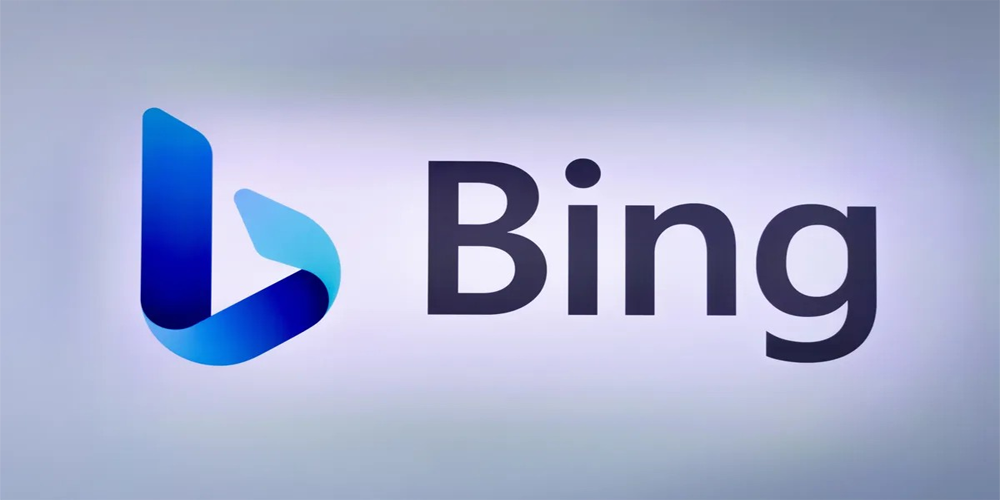Google Updates Site Reputation Policy

Google Site Reputation Policy Documentation Google has updated its documentation to provide clearer guidance on its site reputation abuse policy. The changes are meant to you better understand what qualifies as a violation and how to stay compliant. While the updates don’t change how the policy is applied, they make the rules easier to follow by incorporating more detailed explanations from a recent blog post FAQ. The updated documentation now includes content directly pulled from Google’s November blog post about site reputation abuse. That blog post introduced a Q&A section to clarify the policy. Google has now added this FAQ guidance to its official spam policies documentation. In a statement, Google explained: “We updated the site reputation abuse policy to include guidance from our blog post’s FAQ on site reputation abuse. These are editorial changes only, no change in behavior.” This means the policy hasn’t changed — it’s just been rewritten to make it easier to understand. What Is Site Reputation Abuse? The Search Engine Journal is reporting that the site reputation abuse happens when third-party content is published on a well-established website to take advantage of that site’s ranking signals. For example: However, not all third-party content is considered abuse. Forums, user-generated content, syndicated news articles, and editorial pieces are generally acceptable if they’re not designed to manipulate search rankings. These updates make it easier to determine whether your content violates the policy. For example, Google’s FAQ now clarifies common scenarios, such as: The FAQ also explains how to address violations. You can fix the issue by removing or relocating problematic content, submitting reconsideration requests in Search Console, and following Google’s spam guidelines. This is a good reminder to review your content practices to ensure they align with Google’s policies. If you host third-party content, make sure it adds value for users and doesn’t just serve to piggyback off your site’s reputation.
Local SEO: Attract More Customers

Local SEO Strategies to Attract More Customers Having a strong online presence is very important for businesses. Here at Direct Submit, we can help your business grow and develop within your local area. Our team of digital marketing experts uses smart strategies based on data, to boost your online visibility, attract potential customers nearby, and support long-term growth for your business. Local SEO is a part of search engine optimisation. It helps you be more visible online in a certain area. We use different methods to improve your website and online presence. This can make your business rank higher in local search results. This way, you can attract potential customers who want your products or services close by. We provide full local SEO services. This means we can improve your Google Business Profile and create local citations. Our services are designed to fit your business needs. They can help you get real results. Check out these effective strategies to boost your online presence and draw in more local customers to your business. 1. Optimise Your Google My Business Listing Your Google Business Profile (GBP), which used to be called Google My Business, plays a key role in your local SEO strategy. This tool is free from Google. It helps you manage how your business shows up on Google Maps and in local search results. A well-optimized GBP is very important for attracting local customers and showing what you offer. First, make sure that all your business information is correct and current. It should be consistent in all places. This includes your business name, address, phone number, website URL, business hours, and any important categories. Keep your GBP fresh with good photos and videos of your products, services, and team. Ask happy customers to leave positive reviews on your profile. These reviews help create trust. Using your GBP regularly can greatly improve your online presence and help you draw in more local customers. 2. Garner Positive Customer Reviews Online Online reviews are very important for how new customers see your business. They are like proof from other people. This can help people decide if they want to buy from you and can change how you look online. Positive reviews can help build trust and make you look good. But negative reviews can drive away potential customers and hurt your brand image. Listening to what customers say is important. Taking care of your online reputation helps build a strong brand image. A good image will help you attract potential customers. 3. Leverage Local Keywords for SEO Success Keyword research is very important for a successful local SEO campaign. You have to find local keywords that fit your business. When you use these keywords in the right spots on your website, like in the content, meta descriptions, and headings, you can reach potential customers who are looking for what you offer. Make sure to use these local keywords in your website content. Using them naturally will help your site provide useful information. It will also help people find exactly what they are looking for. When you add these local keywords, your site can show up better in local search results. This way, you can connect with a specific audience. 4. Create Content That Appeals to a Local Audience Content creation is a great way to connect with your target audience and build your local presence. By making clear and helpful content about your area, you show that your business is a leader. This way, you can meet the needs and interests of your community. By sharing helpful and interesting content regularly, you can attract potential customers from your local area. This practice also helps you build brand loyalty and boost your presence in the community. 5. Utilise Local Link Building Techniques Link building is really important for SEO. This is also true for local SEO. When you get quality links from trusted local websites, your website gains more authority. This helps your site appear better in local search results. By building a strong network of helpful local links, you send good signals to search engines. This makes your website more reliable. It also boosts your local search visibility. Enhancing Visibility Through Local SEO To get higher ranks in local search results, you need a good plan. This plan must do more than just quick fixes. You should keep improving your strategies. It is also key to adjust to the changing rules of search engines. By using better ways, you can make your online presence stronger. You can manage local citations, optimise for mobile devices, and add schema markup. These methods help search engines understand your business better. This way, you can reach the right people at the right time and place when they look for local search results. It gives you an advantage in the local market. 1. Manage and Optimise Local Citations Local citations are online listings that show your business name, address, and phone number. It’s important to make sure these details are correct and match everywhere. Keeping them accurate will help you build a strong online presence and boost your local SEO performance. Make sure your business information is right on trustworthy online directories like Yelp and TripAdvisor. Check other sites for your industry too. Claim your business listings and keep an eye on them. This helps you control your online info and improves your visibility. 2. Focus on Mobile Optimisation for Local Searches More people are searching for local information on their phones and tablets. This makes it important to have a website that is easy to use on these devices. A mobile-friendly site gives potential customers a better experience when they visit. A good experience can help improve your search engine rankings. It can also make your business more visible online. You need to make sure your website loads quickly. A slow site can result in penalties from search engines and make users angry, especially when they’re on mobile devices. In today’s world, which focuses on mobile
Internal Linking & its Impact on SEO

Internal Linking & its Impact on SEO Internal linking is integral to SEO success, yet many articles that discuss SEO techniques and best practices skip over it. In this guide, we’ll explore the benefits of internal linking and the impact these links have on SEO. A brief introduction to internal linking Many people are familiar with articles that contain links. Internal links are links from one page to another on the same domain or website. Every site has internal links, but not all content marketing strategies are taking full advantage of the potential impact of internal links. When used to full effect, internal links can have a dramatic impact on SEO, boosting performance and enhancing search engine ranking significantly. Why is internal linking important for SEO? Internal linking is critical for search engine optimisation because search engines like Google use links to discover and identify new content. If you produce an article, and you include links to other pages within your sitemap, Google will be able to locate them using crawler technology. Google is already aware of content that has previously been discovered through crawling, but adding internal links enables it to discover new content on the same site. Internal links are also beneficial because they improve page ranking and authority and they enable web users to navigate your website, enhancing user experience. User experience plays an increasingly important role in SEO, as search engines are actively looking to promote pages and sites that offer value for their online audience. How to use internal linking to boost SEO It is challenging to stand out online, with more and more businesses and organisations looking to turn heads and drive traffic to their websites. This is why it’s crucial to understand how to improve SEO performance and ensure the content you produce and share has the best chance of helping you achieve key business objectives. Success is never guaranteed with SEO and the days of simply producing keyword-rich content and moving up the rankings are long gone. SEO is complex and there are several steps to take to climb the page and earn respect from search engines. Internal linking is one ploy that can make a positive difference. There are several best practice guidelines to consider when exploring internal linking and its impact on SEO. These include: The structure of your website is an important consideration for search engines. Think of your site as a pyramid, with the most important pages at the top. In most cases, the homepage will form the tip, followed by category pages and then individual pages, posts and sub-categories. Your most valuable and important content should be the focus of your internal linking strategy. You want your links to divert to cornerstone content and search engine crawlers to recognise that these are your most critical pages. Use links to build and underline your hierarchical structure. You should aim to link ‘parent’ articles with ‘child’ articles, which include features that are related within a sub-category, for example. You can also link to sibling pages, connecting posts that are similar to make it easy for readers to explore different subjects and for search engines to recognise that your content is related. Many sites cover a range of topics or subjects. If you’re producing an article, it’s advisable to add links that are connected. Link to other articles that cover similar or related subjects within the same categories or sub-categories. Choose the articles that you consider most important and the pages you want people to visit. If you have a cornerstone piece, all articles that are connected to this post in terms of theme and category should link back to that feature. You can also link to other articles from your cornerstone piece to encourage readers to view those posts too. Incorporating links within the body of the text is an excellent idea and you can also suggest similar posts and include links in a related post section beneath the article. Using anchor texts can be an effective way to improve page ranking, but it’s essential to use them in the right way. Anchors should use keywords, but they should always be natural and relevant to the subject of the article. When creating content for SEO purposes, it’s vital to understand the rules and regulations to avoid penalties and maximise the chances of getting your posts and links noticed. There are red flags that can arouse suspicion, including content that is stuffed with keywords and endless links. It is often beneficial to add a substantial number of internal links, but it’s important not to go too far. Typically, you would expect to see 10-15 internal links per 1,000 words, but this number is not set in stone and it’s not solely the quantity that matters. Quality is always a factor for search engines. It is better to have a smaller number of high-quality links than a larger number of poor quality links. Using too many links could dilute the impact of the links you want to prioritise. Relevance is a key factor when choosing internal links. Adding links that are irrelevant will undermine the strategy. Users want to be able to navigate a site with ease and to find content that is of interest to them. If you’re writing about bringing a new puppy into your home and getting the house ready, for example, link to other pages that talk about dog ownership or welcoming a pet into your family. An article like this should not link to a piece about a new winter wardrobe, DIY projects to add value to your home or healthy eating, for example. Every link should serve a purpose. Internal linking & SEO Internal linking is an integral component of SEO success, but all too often, it is overlooked. If you’re looking to drive traffic, improve your search engine ranking and enhance user experience, it’s beneficial to understand the potential impact of internal linking and add relevant, high-quality internal links to your content. Internal
Are People Clicking Links in ChatGPT Search?

Are People Clicking Links in ChatGPT Search? A report from Modern Retail shows that people who use ChatGPT and Google Gemini for quick summaries also click the links these tools provide. This is important for marketers, as it suggests that AI-driven search may change product discovery and online traffic. The Search Engine Journal is reporting that while these numbers are self-reported and lack broader data, they offer insight into how consumers engage with AI search results and how brands can benefit. What Brands Are Observing Viv, a period care brand, noticed a trend last summer when its website traffic increased by 400%. Marketing director Kelly Donohue linked this to the rise of AI tools. This spike coincided with a study in Environment International that found harmful heavy metals in popular tampon brands. Viv’s blog posts about product safety gained visibility as people searched for safer options. The increased traffic resulted in more sales, with Viv reporting a 436% rise from these AI-driven referrals. This indicates that users actively clicked through to learn more and make purchases. Viv’s experience highlights the need for brands to create comprehensive content that answers people’s questions. Donohue pointed out that platforms like ChatGPT prefer articles with context, sources, and thorough explanations over keyword-heavy material. Donohue explained, “These AI tools are specifically scraping through content, but looking for more than just keywords. They’re looking for a cohesive response that they can give to people that includes context, sources, and background.” In response, Viv focused on transparency and product safety. By creating educational articles, Viv built consumer trust and improved its visibility in AI recommendations. The effort paid off, Donohue added: “We ended up selling out of about six months of tampon inventory in three weeks, driven by Google’s AI-powered recommendations.” Other Brands Report Similar Trends Joe & Bella is an adaptive apparel brand that has gained more visitors from ChatGPT recommendations. It makes clothing for older adults and people with mobility challenges, and during the holiday season, it saw an increase in visitors and purchases. Jimmy Zollo, Joe & Bella’s co-founder and CEO, tells Modern Retail: “I don’t really know how or what they would have typed or asked ChatGPT to have found us over the holidays.” Zollo speculated that the company’s ongoing investment in SEO and its blog content likely played a role. These reports show that people engage with links in AI-generated search results rather than just reading summaries. Dan Buckstaff, chief product officer at Spins, compares this to the early days of SEO. Buckstaff said: “Similar to 15 years ago when we were questioning how SEO worked, we’re left with questioning how brands can benefit from AI environments.” Spins’ 2025 Industry Trends Report indicates that consumers are increasingly using AI tools like ChatGPT and social media platforms like TikTok to discover products. While advertising on these AI tools is still developing, brands with strong, organized content are benefiting. Looking Ahead Consumers are increasingly clicking on links in AI-driven search results, especially younger audiences like Gen Z, who use AI tools for product discovery. For brands like Viv, this change is crucial for content creation. Donohue said: “These searches are top of mind for us now, and the way we’re writing our blogs and the content on our website can play a huge part in people finding us through AI tools.” The key takeaway is to focus on straightforward, educational content to improve your chances of being recommended by AI-powered search tools.
Grove England Perfume & Fragrance Collections

Welcome to Grove England Perfume & Fragrance CollectionsA new client has arrived with Direct Submit. Grove England who offer a range of natural fine fragrances, luxury bath and body products, and much more. Their Grove England Website encourages visitors to discover more about GROVE England’s story and explore their range of luxury bath products. Bringing a little more beauty, care, and elegance into your everyday life’s. Combining natural fragrances with artistry to bring joy to everyday moments with collections that are beautifully natural and luxuriously practical. The client has asked us to help them promote their services across the UK. Why? Because Direct Submit will create a bespoke SEO plan to meet the needs of your business and utilise a full range of professional SEO services to enhance your online visibility and give you a competitive edge. We also offer a range of SEO Packages that represent great value for money while delivering you expert SEO Services. Looking specifically for local SEO to market your business? We offer effective & affordable specialist Local SEO services that will position your site to experience exponential growth in traffic. Call Direct Submit today on 0800 669 6848 for Your FREE Local SEO Estimate and find out how we can help expand your business and bring you, new customers. We deliver more customers — not just more website traffic!
LSI Keywords & SEO

Understanding LSI Keywords & SEO Search Engine Optimisation or SEO is key for any website that wants to be noticed. Content marketing is very important, but knowing how search engines operate can help your content reach a bigger audience. This is where LSI keywords come in handy. When you understand and use LSI keywords correctly, you can improve your website’s ranking in search results and attract more visitors. LSI keywords, known as Latent Semantic Indexing keywords, are words that link to the main topic of your content. They are different from regular keywords because they focus on the meaning and how words relate to each other. By using LSI keywords naturally in your text, you help search engines understand your topic better. This helps your content connect with the right audience. LSI keywords help search engines understand your content as a person would. They show how different terms are connected. This results in more accurate and relevant search results. The Evolution of LSI Keywords from the 1980s to Today LSI keywords come from the search for information. This idea began with a method named Latent Semantic Analysis (LSA) in the 1980s. LSA helped find hidden meanings in a large set of documents. It did this by looking at how words connect to each other. Susan Dumais, a pioneering computer scientist, was important in creating LSA. Her research made better systems that search for information by examining how words relate to each other. This work led to the development of what we call LSI keywords now. As time passed, LSA and LSI started to be used in many more areas, especially in SEO. Search engines began to understand what people mean and want when they search. Because of this, using LSI keywords is now very important for website owners. They want to boost their search rankings. Debunking Myths: What LSI Keywords Are and Aren’t There are several myths about LSI keywords. It’s important to understand that LSI keywords are not about tricking search engines or hiding keywords. They are related terms that provide extra context to your content. LSI keywords are not a new type of keyword. They are identified using natural language processing (NLP) tools. These tools analyze how words and phrases connect in a specific context. You can view them as extra words that enhance the clarity of your content. In the end, LSI keywords make your content better for both search engines and people. When you pay attention to related terms and use natural language, it becomes easier to read. This can help you appear more often in search results. The Role of LSI Keywords in Google’s Algorithm Google’s search system keeps changing. It aims to understand what people mean and want when they search. LSI keywords play a big role in this. They help Google learn more about your web pages. When Google finds words that are connected to your main keywords, it believes your content is better and more important. This can help you rank higher, bring in more visitors, and create a stronger online presence. How Google Interprets LSI Keywords for Better Search Results Google’s algorithm uses LSI keywords. These keywords help Google understand what words mean and how they relate to each other in searches. Instead of only searching for exact words, Google considers the context of the words. For example, if someone searches for “coffee,” Google can find related words like “beans,” “brewing methods,” “caffeine,” or “espresso.” This helps Google show more relevant results. A page about “coffee brewing guides” can appear in the search results, even if it doesn’t say “coffee” many times. When you add LSI keywords to your content, you help Google know what your page is about. This increases your chances of appearing in searches that matter. It can also help you reach your target audience. The Difference Between LSI Keywords and Traditional Keywords Traditional keywords are still very important for SEO. However, they don’t always reflect how people really talk or what they actually want when they search. These keywords usually focus on the exact phrases that users type into search engines. LSI keywords, which stand for Latent Semantic Indexing keywords, focus on the broader idea. They look for related keywords instead of only exact matches. This helps provide better context to the main topic. As a result, search engines like Google can better grasp the content’s meaning, making it more relevant to users. LSI keywords are important for your main keywords. They explain what your topic is and help search engines figure out what users need. This results in better search results. Implementing LSI Keywords in Your SEO Strategy Integrating LSI keywords into your SEO strategy should be simple. It is not just about adding random words. You should focus on making your content flow smoothly and ensuring it makes sense. Once you find the LSI keywords that go well with your target keywords, use them in your content in a natural way. This can boost your SEO. It also makes your content clearer and more helpful for people. Identifying LSI Keywords for Your Content Identifying LSI keywords is important for getting good results. There are several tools and methods to help you find these useful keywords. Here’s how you can do LSI keyword research: By using these LSI keyword research methods, you can create a strong list of related terms. This will help make your content better and increase its visibility in search results. Best Practices for Integrating LSI Keywords into Web Pages Once you find good LSI keywords, it is important to add them correctly to your web pages. Here are some best practices you should follow when using LSI keywords: By using these best practices, you can easily add LSI keywords to your web pages. This will help your site show up better in search engine results. It will also make the user experience better. The Impact of LSI Keywords on Content Quality and SEO Using LSI keywords can boost the quality of
Google Shopping Ranking Factors

Google Shopping Ranking: Key Factors Retailers Must Know A recent study analyzing over 5,000 Google Shopping keywords has unveiled critical insights into the factors that influence higher rankings. Conducted by Jeff Oxford, Founder of 180 Marketing, the research highlights trends that eCommerce businesses can use to boost visibility in Google’s free Shopping listings. The findings reveal that pricing, customer reviews, backlinks, and website authority all play significant roles in determining rankings. Amazon’s Dominance in Google Shopping Amazon continues to dominate Google Shopping, ranking in the #1 position for 52% of searches. In comparison, Walmart holds a modest 6%, while Home Depot accounts for just 3%. This commanding lead underscores Amazon’s strong presence in the eCommerce space, driven by its established authority and expansive product range. Beyond Amazon’s impressive performance, the study found that well-established brands with higher website authority tend to outrank competitors. This reinforces the importance of building a trusted brand and robust online presence to compete in Google Shopping. Key Factors Influencing Google Shopping Rankings The research identified several key trends that distinguish higher-ranking product pages from the rest. Below are the most impactful factors: 1. Backlinks: The Power of Referring Domains Backlinks, or external links pointing to a product page, emerged as a critical ranking factor. Product pages in the top two positions had significantly more backlinks than their lower-ranking counterparts. However, the study revealed a surprising insight: 98% of product pages analyzed lacked any backlinks at all. This presents a significant opportunity for eCommerce stores to outperform competitors by investing in link-building strategies. By earning high-quality backlinks, businesses can boost their website authority and improve rankings in Google Shopping. 2. Customer Reviews: A Key to Visibility Customer reviews were found to have a strong correlation with higher rankings. Product pages featuring reviews consistently performed better than those without. Additionally, stores with average star ratings below 3.5 struggled to rank in top positions. Positive reviews not only build trust with customers but also signal quality to Google’s algorithm. To leverage this factor, retailers should encourage customers to leave reviews and focus on maintaining a high average rating. Implementing strategies like follow-up emails after purchases or incentivizing reviews can help build this critical ranking asset. 3. Pricing: Competitive Pricing Wins Pricing also emerged as a major factor influencing rankings. Products priced below the category average tended to rank higher. This suggests that competitive pricing is crucial for gaining visibility in Google Shopping. Retailers should regularly analyze competitors’ pricing to ensure their products remain attractive to budget-conscious shoppers. However, it’s essential to balance lower pricing with profitability to avoid unsustainable margins. On-Page SEO: Meta Descriptions and Keywords Among on-page SEO factors, meta descriptions had the strongest correlation with higher rankings. Product pages that included exact-match keywords in their meta descriptions consistently outperformed those that didn’t. This indicates that well-crafted metadata can enhance both organic search visibility and Google Shopping performance. While keyword usage in title tags and H1 headers showed some correlation, their impact was less significant compared to meta descriptions. Retailers should focus on optimizing their metadata by including relevant keywords and compelling descriptions that encourage clicks. Structured Data: Mixed Results Structured data, often touted as essential for SEO, showed mixed results in the study. Surprisingly, product structured data had little to no correlation with higher rankings. Even Amazon, the leader in Google Shopping, doesn’t utilize structured data on its product pages. However, pages using review structured data did perform better, suggesting that highlighting customer feedback through schema markup can have a positive impact. Retailers should consider implementing review structured data to enhance their visibility in search results. Shipping, Returns, and Website Quality Google evaluates stores on several metrics, including shipping, returns, and website quality. The study found that retailers with “Exceptional” or “Great” scores in shipping and returns were more likely to rank in the top 10 positions. This reinforces the importance of providing fast shipping, hassle-free returns, and an overall excellent customer experience. Retailers should prioritize these areas by streamlining fulfillment processes, offering competitive shipping rates, and creating transparent return policies. These efforts not only improve rankings but also foster customer loyalty. Key Takeaways for Retailers Based on the findings, the following strategies can help retailers improve their Google Shopping rankings: Final Thoughts: Correlation vs. Causation While the study provides valuable insights, it’s important to remember that correlation does not imply causation. Retailers should test changes thoughtfully and focus on delivering value to customers. Ultimately, success in Google Shopping lies in balancing traditional SEO tactics with a customer-first approach. By implementing these strategies, eCommerce stores can enhance their visibility, attract more shoppers, and compete effectively in Google Shopping’s dynamic landscape.
Google Criticizes Bing for New Homepage

Bing’s New Homepage Parisa Tabriz, the security leader for Google Chrome, has criticized Microsoft for a new strategy involving Bing’s search interface. In a post on X (formerly Twitter), Tabriz denounced Microsoft’s decision to imitate the design of Google’s homepage, labeling it “another tactic in its long history of tricks to confuse users and limit choice.” She concluded her statement with sharp words: “New year; new low, Microsoft.” The Search Engine Journal is reporting that this criticism comes after Bing introduced a controversial feature that mimics Google’s user interface when users search for “Google” or “Google.com.” Microsoft’s New Bing InterfaceWhen users not signed into a Microsoft account search for Google on Bing, they see a page that looks a lot like Google’s homepage. The page has a search bar in the center, a banner with animated figures similar to Google Doodles, and a message saying, “Every search brings you closer to a free donation. Choose from over 2 million nonprofits!” This message links to the Microsoft Rewards catalog, where users can donate their reward points to nonprofit organisations. The design makes it hard to see Bing’s branding by scrolling the page slightly down to hide the Bing logo. Users may only realise they’re still using Bing when they scroll or interact with the page further. Industry observers like Windows Latest and The Verge note this move appears targeted at users setting up new Windows PCs, who might initially search for Google through Microsoft Edge’s default Bing search engine. The design change could potentially retain users who might otherwise switch to Google’s search platform. Many of these users search for Google to switch their search engine. Microsoft’s change aims to keep users from leaving Bing. While tech-savvy users may notice this strategy, it might persuade less experienced users to keep searching on Bing, helping Microsoft retain more users. This latest tactic highlights the ongoing competition between Microsoft and Google in the search engine market. Microsoft has employed various strategies to promote its Bing search engine and Edge browser, including pop-ups and changes to Chrome’s download pages. In parallel, Google has encouraged users to download Chrome and set Google as their default search engine, though its methods haven’t included outright deception. Google’s and Microsoft’s rivalry remains heated. As of December, Google’s search engine maintained a dominant global market share of 89.74%, while Microsoft’s Bing held 3.97%.
Understanding SEO Packages in the UK

Understanding SEO Packages in the UK In today’s digital world, it’s very important to have a strong online presence for success. SEO services can help with this. They use methods like keyword research and search engine optimisation. These strategies make your website easy to find. This attracts more potential customers and helps your business grow steadily. Search engine optimisation, or SEO, is key in digital marketing, especially for UK businesses. It works to boost where your website shows up on search engines like Google. This makes it easier for potential customers to find you. An effective SEO strategy uses several methods to improve how easily people can find your website. This can bring in more organic traffic, meaning more visitors to your site. The aim is to change these visitors into loyal customers. With a strong SEO package, you can stand out from competitors and help your business succeed in the UK market for a long time. The Role of SEO in Today’s Digital Landscape Why is it important to have a strong online presence? A lot of people use search engines to find products and services. This means that if people can find your website easily, it will help you reach your business goals. That’s where SEO is important. It helps you improve your online presence. This can attract organic traffic. These are valuable visitors who are searching for what you offer. When your search engine rankings improve, people can find your website more easily. This leads to more visitors who are interested in what you offer. As a result, you can boost conversions and work towards your business goals. How SEO Packages Can Transform Your Online Visibility Imagine your website always on the first page of search results for important keywords. A full SEO package can make this a reality. By using techniques like keyword optimisation, content marketing, and improved website design, SEO increases your online visibility. This drives more qualified visitors to your site. SEO is not the same for every business. Good SEO agencies tailor their services to meet your unique needs. They focus on making your website appealing to your target audience. This helps you achieve your goals. Case studies show how strong effective SEO can be. Many businesses in various fields have experienced big increases in website traffic, getting leads, and making sales after using personalized SEO plans. Tailoring SEO Strategies to Your Business Needs To achieve great positions in search engine results, you must understand your target audience and your competition. You should also be aware of the changes in the world of SEO. That’s why having a personalized plan is very important. A strong SEO strategy goes beyond just simple steps. It involves doing keyword research, optimizing your pages, building links, and making content that people enjoy. All these tasks should be done with care to match your business goals and target market. Identifying Key SEO Objectives for UK Businesses Defining your SEO goals is an important first step for a good digital marketing plan. What do you want to achieve with SEO? Do you want to improve brand awareness? Would you like to increase website traffic? Or are you looking to get more online conversions? After you find your main goals, you can change your SEO efforts to fit them. For example, if your goal is to improve online visibility, then you should pay attention to keyword research, link building, and getting better at technical SEO. To improve user experience and increase conversions, it’s essential to make your website’s design, navigation, and content easier to use and more engaging. Custom SEO Solutions vs. One-Size-Fits-All Packages Navigating SEO can seem tough. There are many agencies offering different packages. However, you should keep in mind that your business is unique. Your SEO plan should reflect that special quality. Pre-packaged SEO solutions might seem appealing. However, they often lack the personal touch needed to get great results. That’s why custom SEO solutions are important. These tailored strategies are created by SEO experts. They focus on your business goals, understand your target audience, consider your competition, and analyze your website traffic. When you team up with SEO experts who truly care about your needs, you can get the most out of SEO. This can help you grow in a strong and lasting way. Components of Effective SEO Packages Effective SEO packages use complete strategies. Every part plays a key role in making your website stand out and reach the results you want. When you choose an SEO company, ensure their packages offer a full approach. You should focus on both on-page and off-page optimization. On-page optimization means enhancing your website’s content and layout. Off-page optimization includes building links and boosting your online reputation. Technical SEO is also vital. It ensures that your website is easy to navigate and works well on mobile devices. If needed, local SEO is important too. It helps you show up better in local search results. On-Page SEO Essentials for UK Websites On-page SEO focuses on making your website better so it can rank higher in search results. This involves adjusting your website’s content, layout, and HTML to meet the needs of your target audience. A good user experience is also important. To do on-page SEO right, start by researching keywords. This helps you discover the words that your target audience uses. After that, you can add these keywords into your website’s content, meta descriptions, and title tags. It’s also important to arrange your website in a clear way. Make it easy for visitors to get around, by having links that help them find what they need. When you pay attention to good on-page SEO, you create a website that search engines and your target audience will appreciate. This can boost your chances of showing up on the first page of search results. The Importance of Off-Page SEO in Gaining Visibility On-page SEO focuses on making better features for your website. Off-page SEO deals with things outside your site that
WordPress Backup Plugin Vulnerability

WordPress Backup Plugin Vulnerability Exposed A high severity vulnerability in a popular WordPress backup plugin allows unauthenticated attackers to exploit the flaw. The vulnerability is rated 8.8 on a scale of 0.0 to 10. UpdraftPlus: WP Backup & Migration PluginThe vulnerability affects the popular Updraft Plus WordPress plugin, installed in over 3 million websites. Updraft Plus comes in a free and paid version that allows users to upload backups to a user’s cloud storage or to email the files. The plugin allows users to manually backup the website or schedule it for automatic backups. It offers a tremendous amount of flexibility of what can be backed up and can make a huge difference for recovering from a catastrophic server issue and is also useful for migrating to a different server altogether. Wordfence explains the vulnerability: “The UpdraftPlus: WP Backup & Migration Plugin plugin for WordPress is vulnerable to PHP Object Injection in all versions up to, and including, 1.24.11 via deserialization of untrusted input in the ‘recursive_unserialized_replace’ function. This makes it possible for unauthenticated attackers to inject a PHP Object. No known POP chain is present in the vulnerable software. If a POP chain is present via an additional plugin or theme installed on the target system, it could allow the attacker to delete arbitrary files, retrieve sensitive data, or execute code. An administrator must perform a search and replace action to trigger the exploit.” The Updraft Plus changelog seems to minimize the vulnerability, it doesn’t even call the update a security patch, it’s labeled as a “tweak.” From the official Updraft Plus WordPress plugin changelog: “TWEAK: Complete the review and removal of calls to the unserialize() PHP function allowing class instantiation begun in 1.24.7. (The final removal involved a theoretical security defect, if your development site allowed an attacker to post content to it which you migrated to another site, and which contained customised code that could perform destructive actions which the attacker knew about, prior to you then cloning the site. The result of this removal is that some search-replaces, highly unlikely to be encountered in practice, will be skipped).” Updraft Plus Vulnerability PatchedUsers are recommended to consider updating their installations of Updraft Plus to the latest version, 1.24.12. All versions prior to the latest version are vulnerable.
